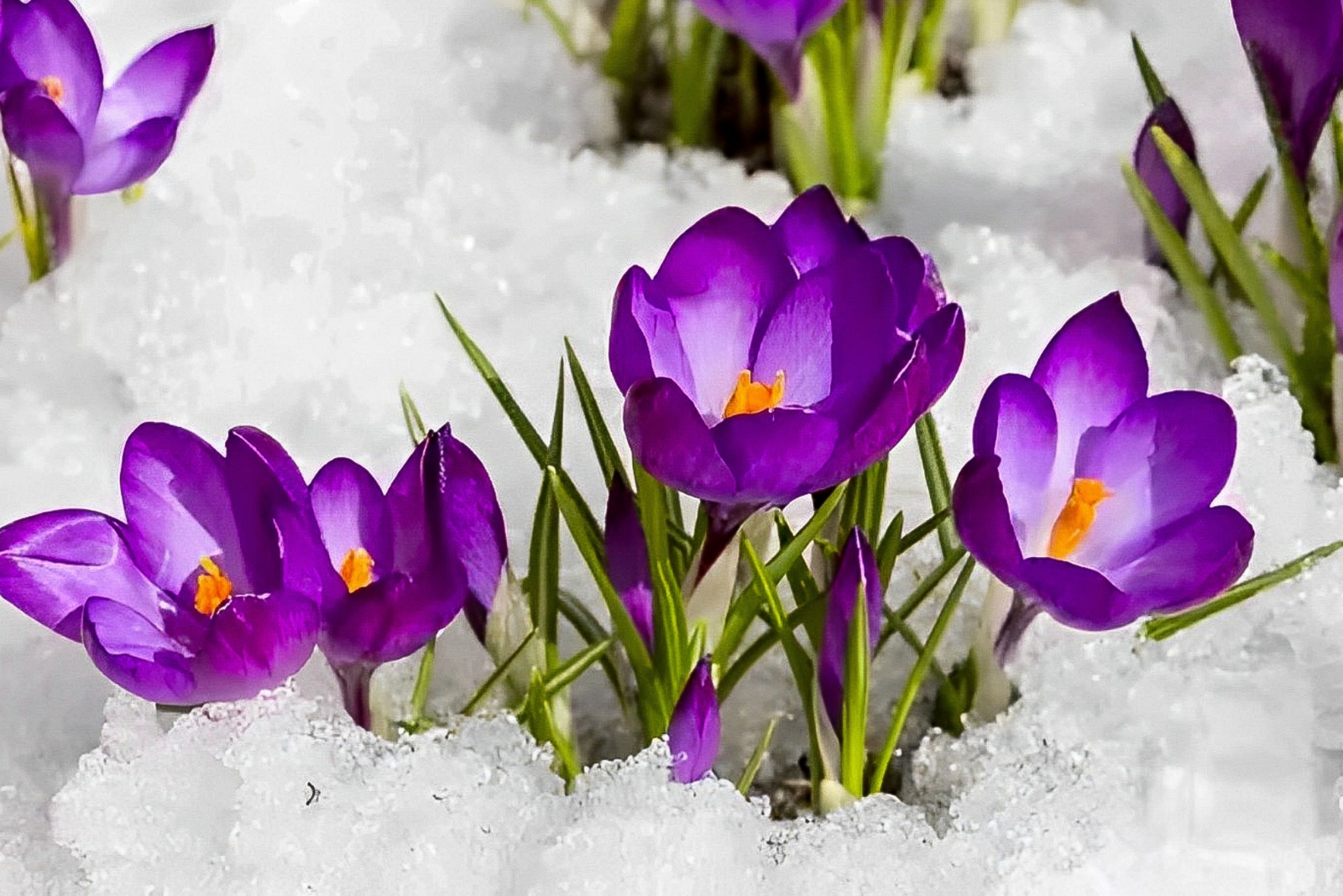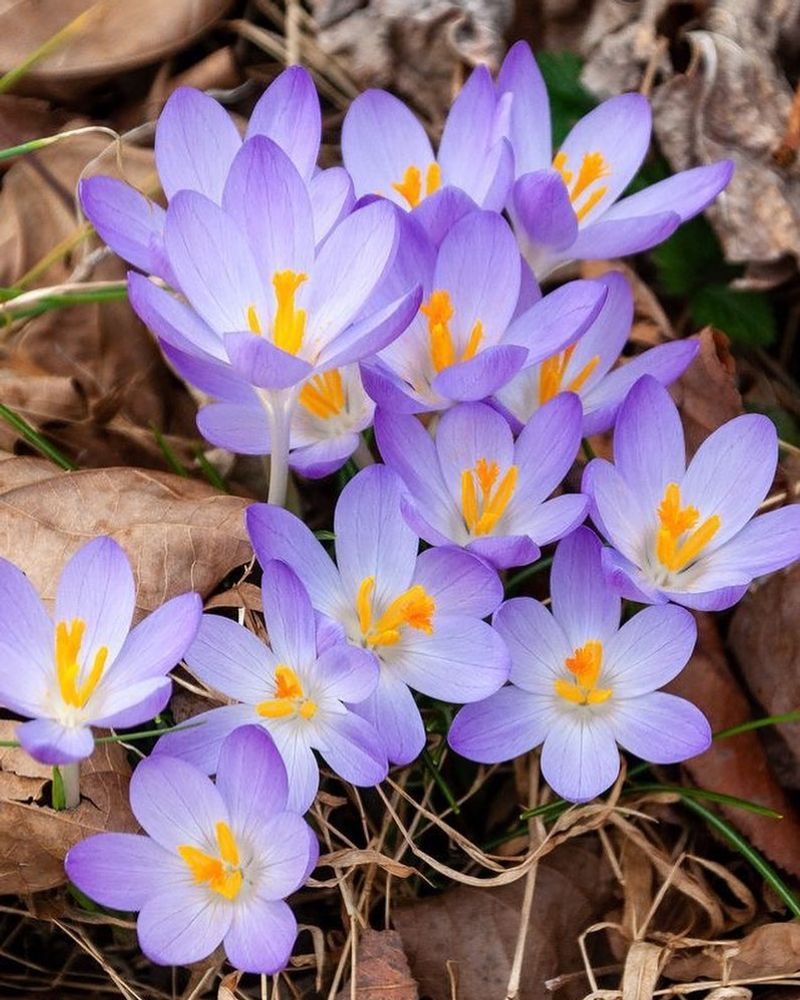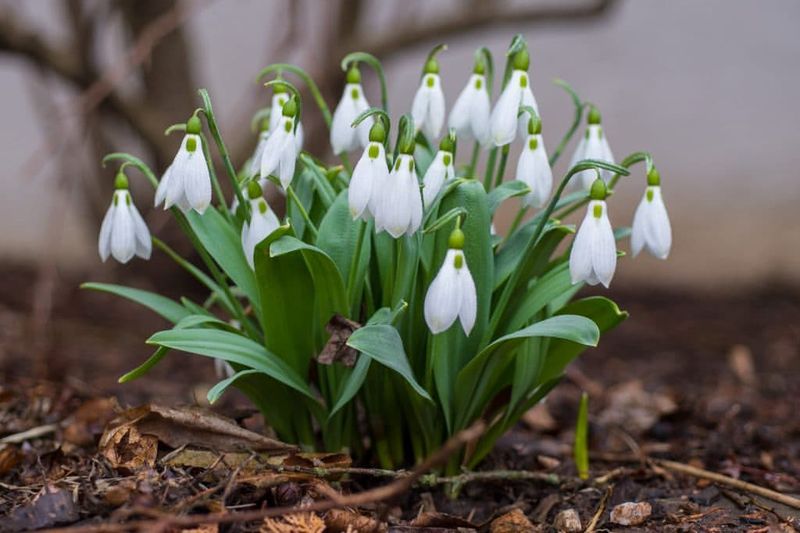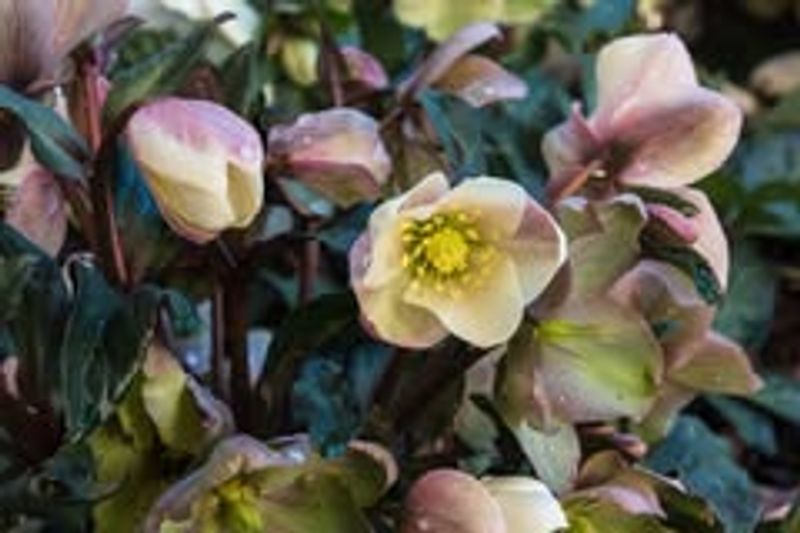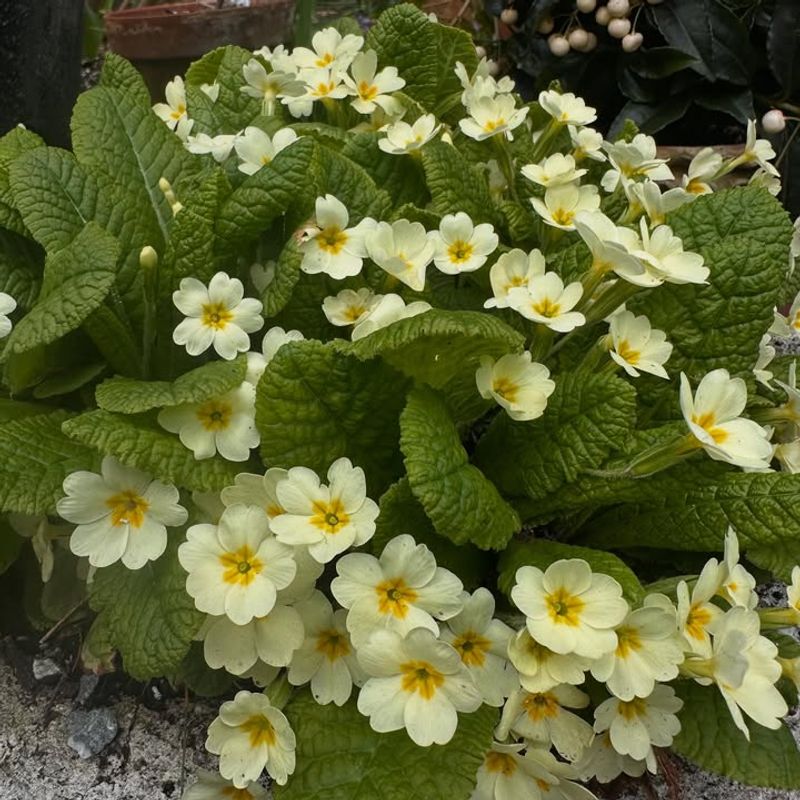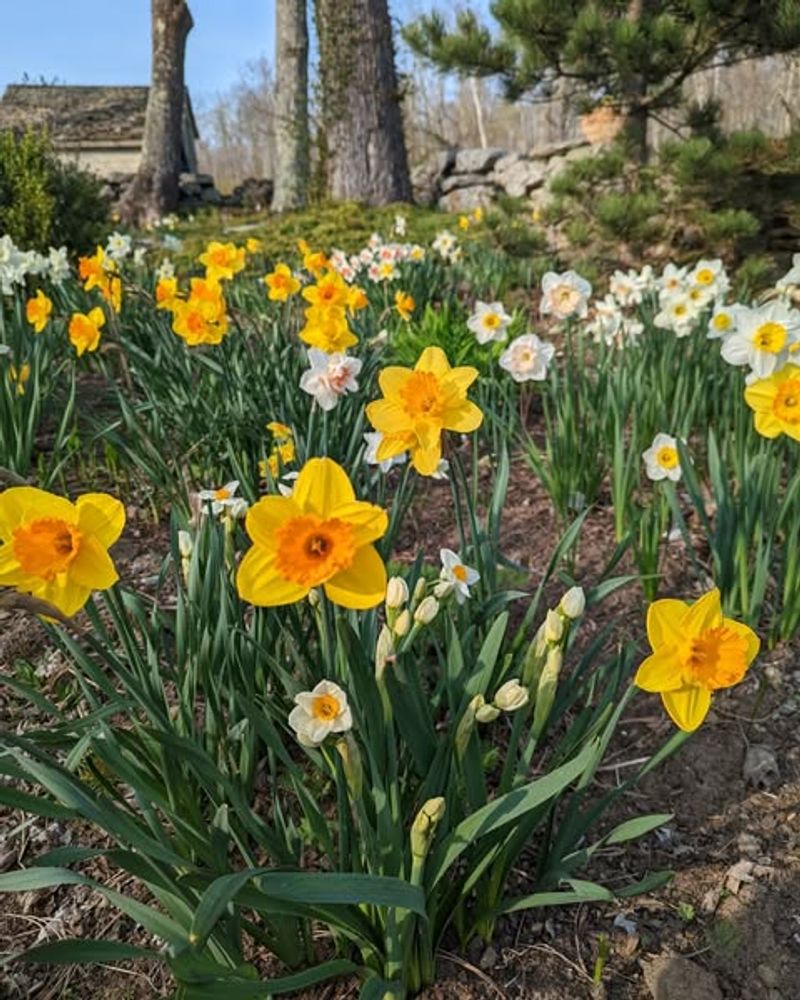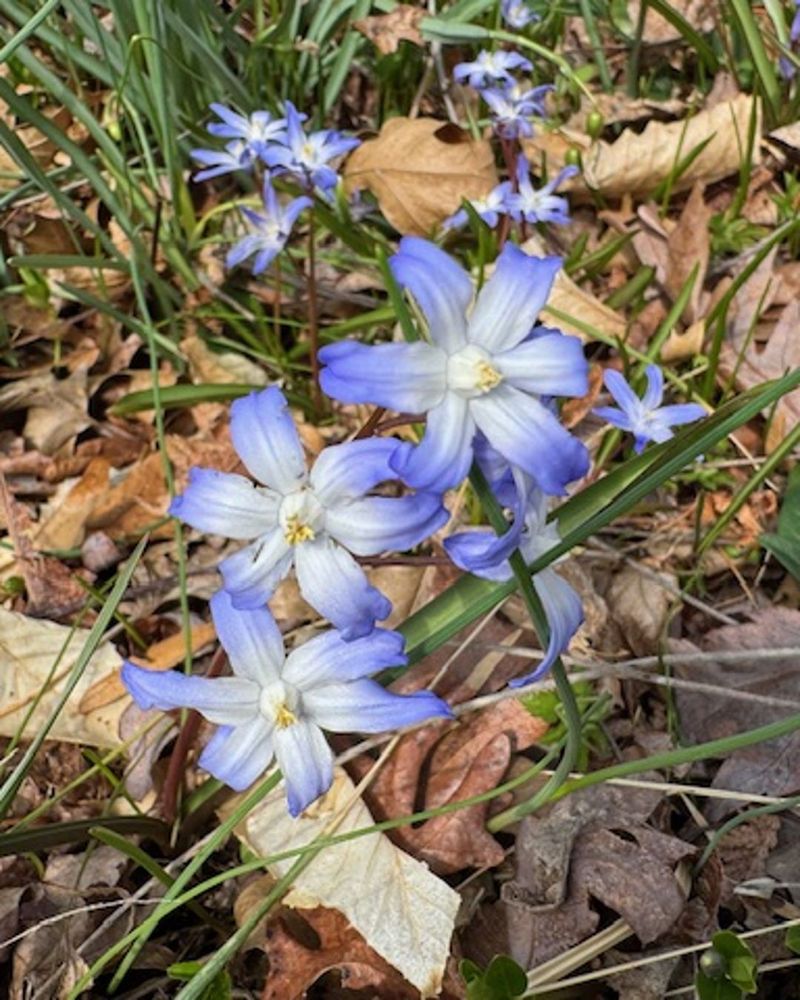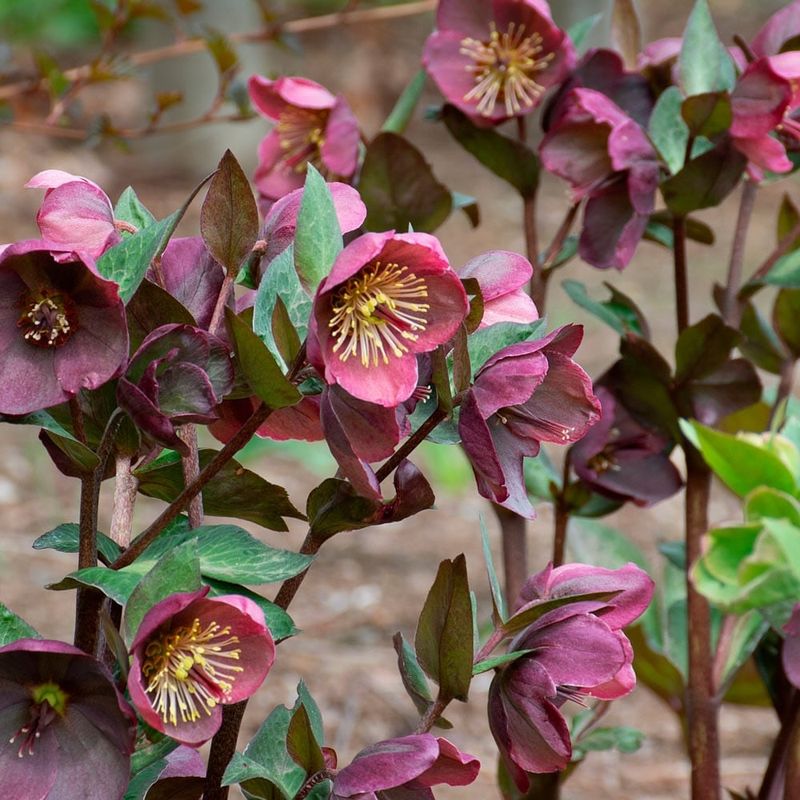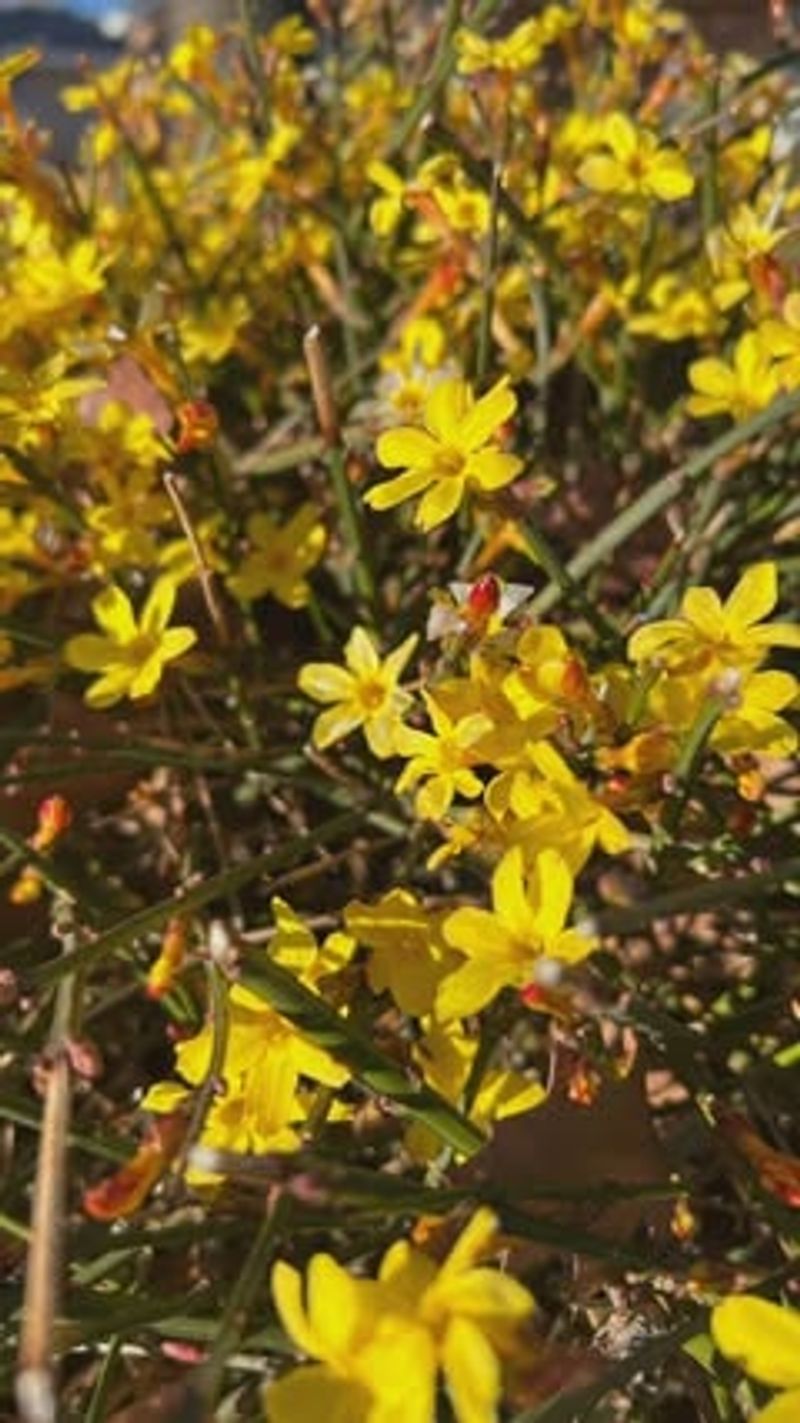Delaware’s surprise cold snaps can flatten a garden overnight, but a few flowers refuse to stay down. I’ve watched them droop one day and perk up like nothing happened the next.
Their resilience feels almost unreal sometimes. That toughness is exactly why gardeners keep planting them year after year.
1. Crocus
One of the earliest bloomers, crocus pops up through snow like it’s no big deal. Delaware gardeners love spotting these cheerful flowers in late winter because they signal spring is coming soon.
Their underground corms store energy all winter long, protecting them from harsh conditions. When temperatures rise just a bit, they shoot up quickly and open their colorful petals.
Plant them in fall for a delightful surprise when everything else looks gray and lifeless around your yard.
2. Snowdrop
Snowdrops earned their name by literally pushing through frozen ground and even snow cover. Their delicate white bells might look fragile, but they’re incredibly tough survivors in Delaware’s unpredictable climate.
Special proteins in their cells act like natural antifreeze, preventing ice crystals from forming inside the plant tissue. This amazing adaptation lets them bloom while other plants stay dormant.
Add these to shady spots under trees where they’ll naturalize and multiply over the years beautifully.
3. Hellebore
Sometimes called Christmas rose or Lenten rose, hellebores bloom during Delaware’s coldest months without batting an eye. Their thick, leathery leaves and sturdy stems laugh at freezing temperatures that would flatten most flowers.
Gardeners appreciate how these evergreen perennials provide color when absolutely nothing else is flowering outside. They come in gorgeous shades from white to deep burgundy and even spotted varieties.
Place them near walkways where you’ll actually see and enjoy their winter blooms regularly.
4. Pansy
With their cheerful little faces, pansies brighten up Delaware gardens from fall through spring without complaining about cold snaps. Modern varieties have been bred specifically to tolerate freezing temperatures and still produce loads of flowers.
Their secret lies in flexible cell walls that can withstand ice formation better than tender annuals. You might see them looking a bit droopy after a hard freeze, but they perk right back up.
Replace tired summer annuals with pansies each autumn for continuous color through winter months.
5. Witch Hazel
Witch hazel blooms in the dead of winter with strange, spidery flowers that smell absolutely wonderful. Delaware’s cold temperatures don’t bother this shrub one bit, and its blooms can last for weeks even during freezes.
The ribbon-like petals actually curl up when temperatures drop below freezing, then uncurl again when it warms up slightly. This clever trick protects the flower parts from damage while still showing off its beauty.
Plant one near your front entrance to enjoy its sweet fragrance on winter walks.
6. Winter Aconite
Bright yellow blooms appear almost magically when winter aconite pushes through frozen Delaware soil in late winter. These cheerful little flowers look like tiny buttercups surrounded by a collar of green leaves.
Their tuberous roots store plenty of energy underground where cold temperatures can’t reach them at all. Once the ground thaws just slightly, they rocket upward and open within days of emerging.
Combine them with snowdrops and crocuses for a spectacular early spring carpet of color throughout your garden beds.
7. Primrose
Primroses bring jewel-toned colors to Delaware gardens right when you need them most after a long winter. Their rosettes of crinkled leaves hug the ground, protecting the crown from the worst cold while flower buds wait patiently underneath.
English primroses especially can handle repeated freezing and thawing cycles that would damage less hardy plants completely. They prefer cool weather anyway and actually bloom better after experiencing some chilly nights.
Tuck them into partially shaded areas where they’ll stay moist but not waterlogged during spring.
8. Daffodil
Nothing says spring in Delaware quite like cheerful daffodils nodding in the breeze after surviving another winter. Their bulbs sit deep underground where temperatures stay relatively stable, even when the surface freezes solid.
Thick, waxy petals help protect the flowers from light frosts that might damage more delicate blooms in your garden. If a late cold snap hits, they might look a bit tired temporarily but bounce back quickly.
Plant hundreds of bulbs in fall for a stunning display that naturalizes and increases every single year.
9. Siberian Squill
Intense blue flowers carpet the ground when Siberian squill blooms across Delaware lawns and gardens each spring. The name gives away its cold-hardy nature since Siberia isn’t exactly known for mild winters at all.
Small bulbs multiply rapidly underground, creating larger displays each year without any extra effort from gardeners. They’re among the earliest bulbs to bloom, often appearing while snow still lingers in shaded spots nearby.
Let them naturalize in lawn areas where you can delay mowing until their foliage yellows completely in late spring.
10. Glory of the Snow
Glory of the snow lives up to its name by blooming while patches of snow still dot Delaware gardens. Star-shaped flowers in shades of blue, pink, and white open wide on sunny days, creating a magical carpet effect.
These tough little bulbs originated in mountainous regions where harsh conditions are normal throughout winter and early spring. They’ve adapted perfectly to handle temperature swings that catch other plants off guard completely.
Mass them under deciduous trees where they’ll bloom before leaves shade the area too heavily in summer months.
11. Lenten Rose
Lenten rose is actually another name for hellebore, blooming around the Christian season of Lent in Delaware gardens. These elegant nodding flowers come in an incredible range of colors and patterns that would make any gardener excited.
Evergreen foliage stays attractive all winter long, then gets joined by gorgeous blooms that last for months without fading. Cold temperatures actually improve their color intensity, making them even more beautiful after freezes hit your area.
Create a woodland garden setting where these sophisticated beauties can shine without competing with flashier summer bloomers later on.
12. Winter Jasmine
Bright yellow flowers stud the green stems of winter jasmine from January through March across Delaware landscapes. Unlike most jasmines, this species doesn’t mind cold weather and actually blooms best during chilly months.
Arching stems stay green all winter, providing structure and color even before flowers appear on the bare branches. The blooms open during warm spells and simply wait out cold snaps, then continue flowering when conditions improve again.
Train it over walls or banks where its cascading habit can show off properly throughout the dreary winter season.

